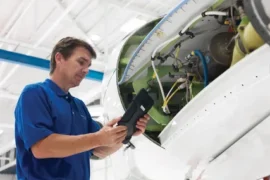Water contamination is a pressing issue that poses a grave threat to ecosystems and human health. Among the most pervasive pollutants are microplastics—tiny plastic particles that infiltrate our oceans, rivers, and drinking water systems.
Their omnipresence has led researchers to innovate novel purification solutions, and one breakthrough technology has emerged as a game-changer: biopolymer-based foam. This revolutionary material not only absorbs up to 99.9% of microplastics but also represents a sustainable approach to combating water pollution.
In this blog post, we will explore how this innovation is revolutionizing water purification, the science behind it, its environmental benefits, and potential applications. By understanding this groundbreaking development, we can appreciate its role in creating a cleaner, healthier world.

Understanding the Threat of Microplastics
Microplastics are defined as plastic particles smaller than five millimeters, originating from the breakdown of larger plastic waste or microbeads in consumer products. These pollutants are alarmingly widespread, with studies showing their presence in over 80% of the world’s drinking water and in the deepest parts of the ocean.
Why Are Microplastics a Problem?
The impact of microplastics goes beyond aesthetics—they pose significant risks to marine life and human health. These particles can enter the food chain when ingested by aquatic organisms, ultimately ending up on our plates. Moreover, microplastics can act as carriers for harmful chemicals, potentially leading to endocrine disruption and other health problems.
Traditional water purification methods, such as filtration and chemical treatment, often fall short in effectively removing microplastics, especially the tiniest particles. This gap underscores the need for advanced technologies like biopolymer-based foam, which is specifically engineered to absorb microplastics with unprecedented efficiency.
The Science Behind Biopolymer-Based Foam
The development of biopolymer-based foam marks a significant advancement in material science and environmental engineering. By combining natural polymers and innovative design, researchers have created a foam that is not only highly effective but also eco-friendly.
What Are Biopolymers?
Biopolymers are natural polymers derived from renewable sources such as plants, algae, and microorganisms. Unlike synthetic polymers, which contribute to plastic pollution, biopolymers are biodegradable and sustainable. This makes them an ideal choice for addressing environmental challenges.
The biopolymer-based foam used in water purification leverages the unique properties of these materials. It is designed with a porous structure that maximizes its surface area, enabling it to trap and absorb microplastics effectively. Laboratory tests have demonstrated its ability to remove up to 99.9% of microplastics from water, setting a new standard for purification technologies.
How Does It Work?
The foam works by capturing microplastics through a combination of adsorption and mechanical entrapment. Its structure mimics natural filtration systems, such as sponges or coral reefs, which efficiently filter out particles from water. Additionally, the foam’s surface can be chemically treated to enhance its affinity for plastics, further improving its absorption capabilities.
This innovation showcases how science can harness natural materials to solve modern environmental problems, truly revolutionizing water purification.
Environmental and Economic Benefits
One of the most compelling aspects of biopolymer-based foam is its dual benefit: it is both environmentally sustainable and economically viable.
Environmental Impact
Traditional water treatment methods often involve energy-intensive processes or chemical additives, which can have adverse effects on the environment. In contrast, biopolymer-based foam is made from renewable resources and is biodegradable, leaving no harmful residues.
By absorbing 99.9% of microplastics, this foam helps to protect aquatic ecosystems and reduce the risk of plastic pollution. Its widespread adoption could significantly improve water quality, safeguarding marine life and ensuring cleaner drinking water for future generations.
Economic Viability
In addition to its environmental benefits, biopolymer-based foam is cost-effective. The materials used are readily available, and the production process is relatively simple compared to other advanced purification technologies. This makes it an accessible solution for communities and industries worldwide, particularly in regions where water pollution is a critical issue.
Furthermore, the foam’s durability and reusability enhance its value, reducing the need for frequent replacements and lowering maintenance costs. This affordability ensures that the technology can reach the areas that need it most, contributing to global water security.
Applications and Future Potential
The versatility of biopolymer-based foam opens up a wide range of applications, from municipal water treatment plants to individual water filtration devices.
Large-Scale Water Treatment
Municipal water treatment facilities can integrate biopolymer-based foam into their existing systems to enhance the removal of microplastics. Its high absorption efficiency ensures that treated water meets safety standards, providing communities with clean and safe drinking water.
Industrial Use
Industries that rely heavily on water, such as manufacturing and agriculture, can benefit from this technology. By incorporating biopolymer-based foam into their processes, they can minimize the environmental impact of their operations and ensure compliance with regulatory standards.
Personal Filtration Devices
For individuals, biopolymer-based foam can be used in household water filters or portable purification systems. This makes it an ideal solution for areas with unreliable water supplies or for outdoor enthusiasts who need access to clean water on the go.
Future Innovations
As research continues, we can expect further enhancements to this technology. Scientists are exploring ways to increase the foam’s capacity and efficiency, as well as its ability to target other pollutants. The potential for combining biopolymer-based foam with other purification methods could lead to even more comprehensive solutions for water treatment.
A Sustainable Solution for a Global Problem
The invention of biopolymer-based foam represents a major milestone in the fight against water pollution. By combining cutting-edge science with sustainability, this technology has the potential to transform the way we purify water, ensuring a cleaner and healthier planet for generations to come.
Why This Matters
Water is a fundamental resource, and its contamination affects all aspects of life—from human health to biodiversity and economic stability. The ability of biopolymer-based foam to absorb 99.9% of microplastics is a testament to the power of innovation in addressing global challenges.
This breakthrough is more than a technological achievement; it is a call to action. Governments, industries, and individuals must work together to implement and scale up solutions like this to protect our water sources and combat the growing threat of pollution.
Conclusion
The revolutionizing water purification capabilities of biopolymer-based foam provide hope in the battle against microplastic contamination. With its unmatched efficiency, environmental benefits, and versatility, this technology is poised to make a significant impact on water treatment worldwide.
As we look to the future, it is essential to support and adopt such innovations to ensure clean water for all. What are your thoughts on the potential of biopolymer-based foam? How do you think it can be applied in your community or industry?





